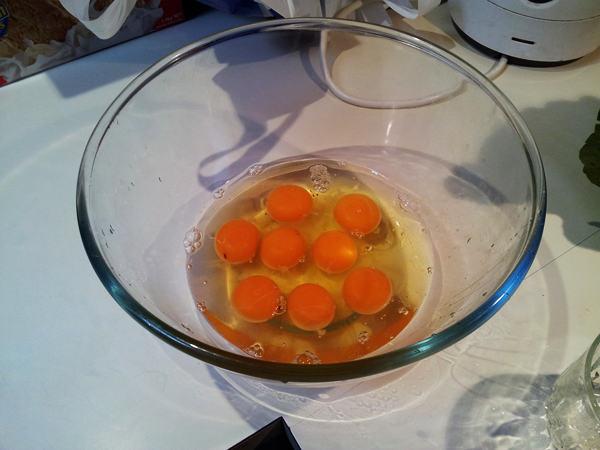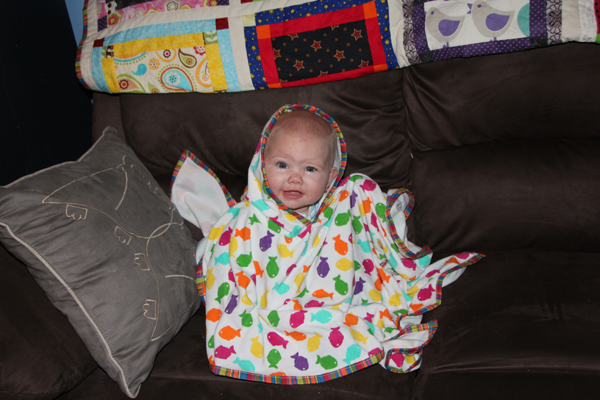What Breed to Choose?
The first things I often get asked by potential new chicken owners are, "what breed of chickens should I get?" and "why did you choose the breeds you have?". The latter being easier to answer.
I chose the breeds I have for a number of reasons. First reason is rather superficial, I like the look of them, they're pretty birds. Secondly, two of the breeds I chose for their egg colour, as I wanted a variety of different coloured eggs in my egg carton. Lastly and personally most important for me, is that they are all purebreed birds, some a lot rarer than others. I feel by keeping them, I am keeping alive part of their heritage and the future of the breed. Don't get me wrong-in no way am I a purebreed snob, I love the crossbreed chickens just as much and they are some mighty fine ones out there.
Now to the question of what breed to get. It's really a personal choice. Do you want to go for something that will consistently lay an egg every day or did you want something that is pretty but useful? Are they going to be pets for children or bug eating, manure makers in your garden or orchard? There is no right or wrong breed, it's what suits you and your lifestyle.
I've put together a list of chicken breeds that can be sourced in Australia. In no way is this list the be all and end all of chicken breeds, this is just a small selection of what is out there.
Commercial Hybrids
The breed of choice for a lot of commercial egg producers are often hybrids [crosses] and they are also the breed most commonly found for sale at fodder stores. They have an extremely high egg production and make pretty good backyard pets.
Often the commercial hybrids can be picked up as rescued birds from egg producers, who replace their hens when they reach about 12-18months old. Often these rescue birds look a bit scraggly from being caged, but their feathers do grow back. Most will also have had the top part of their beak cut off to stop cannibalism in commercial settings-it does make them look a bit different but it shouldn't affect their ability to eat.
Isa Brown
Size: Med-Large
Egg Colour: Brown
Eggs/Year: 300
 |
| Isa Brown hens |
The Isa Brown is a hybrid of Rhode Island Reds and Leghorn chickens, both highly productive egg layers. Isas are relatively placid and not too flighty but can have a tendency to bully new chickens in the flock.
Large breed
The large breed chickens are often quite placid in nature and not as inclined to fly over fences to go exploring. In saying that, it generally still is a good idea to clip one wing to discourage attempts at flying. Many large breed chickens are dual purpose or utility birds, used for both meat and eggs. Their eggs are normally as big or bigger than supermarket eggs [even the extra large supermarket eggs]. Some large breeds also come in a smaller or bantam breed.
I have listed the more common colours of the breeds but some breeds may have more than I have listed-these unlisted colours are either very rare or unavailable in Australia.
Sussex
Size: Bantam
, Large
Colour: Light, Buff, Coronation and Speckled
Egg Colour: Cream to Light Brown
Eggs/Year: 240-260
 |
| Light Sussex hen |
Often used as a dual purpose bird, Sussex are rather docile in nature and are pretty comfortable with human interaction, especially if raised from chicks. They don't go broody too often and less inclined to fly. The bantam Sussex would suit smaller backyards and make good children's pets.
Rhode Island Red
Size: Large
Colour: Dark Red-Brown
Egg Colour: Brown
Eggs/Year: 200+
Rhode Island Reds are another dual purpose breed, they are friendly but can be aggressive if they feel threatened-in particular the roosters. If raised well with plenty of human interaction, they often seek out human companionship and will happily sit in your lap if allowed to.
Wyandotte
Size: Bantam
, Med
-Large
Colour: White, Silver Laced, Gold Laced, Columbian, Partridge, Silver Pencilled
Egg Colour: Pale Brown to Tan
Eggs/Year: 200-240
 |
| Gold laced and silver laced Wyandotte hens |
A particularly pretty addition to the backyard flock, Wyandottes are good egg producers but have a high tendency to go broody. They make excellent mothers and will happily take on a clutch of fertile eggs or even day old chicks to raise as their own. Some individuals can be rather loud in volume but generally show no sign of being flighty.
Barnevelder
Size: Bantam, Large
Colour: Double Laced, Brown, Black
Egg Colour: Dark Brown
Eggs/Year: 180-200
 |
| Double laced Barnevelder hen |
Another dual purpose breed, Barnevelders are another pretty addition to a backyard flock. They are hardy birds who often will lay continuously through the winter months where other breeds may stop.
Australorp
Size: Bantam,
Large
Colour: Black, Blue, White
Egg Colour: Brown
Eggs/Year: 250
 |
| Black Australorp hen [left] and cockerel [right] |
Australorps are an Australian bred, dual purpose breed who have exceptional laying records. One hen has even been recorded to lay 364 eggs in 365 days! Beside their egg laying, Australorps are hardy docile birds who make great mother hens.
 |
| Blue Australorp hen |
Leghorn
Size: Medium
Colour: White, brown, black
Egg Colour: White
Eggs/Year: 280-320
One of the original commercial egg laying breeds before the commercial hybrids came in, the Leghorn has a good reputation for laying lots of eggs. They rarely go broody, but do avoid human contact and are rather loud and flighty-so not ideal for backyards with children or other pets.
Bantams
Bantams are much smaller than your average chicken, making them more suitable for smaller backyards and children's pets. They don't lay as many eggs as the larger breeds and their eggs are much smaller than your average supermarket egg, but still can be used [normally 1.5-2 bantam eggs per normal egg].
It is generally not a good idea to mix bantam breeds with large breeds, but it really depends on the nature and personalities of the hens in the flock.
Silkie
Size: Bantam
Colour: White, Black, Red, Gold, Blue, Buff, Partridge
Egg Colour: White to Light Brown
Eggs/Year: 150
 |
| Silkie hen |
Silkies are a rather unique looking breed of chicken, with soft fluffy feathers similar to chick down, a pom-pom crest, five toes and purple/black faces. They cannot fly due to a lack of proper wing feathers and need decent shelter from rain as their feathers are not water proof. Silkies are very docile birds who, if handled enough are great children's pets. They make excellent brooders and mothers, and are often used to hatch eggs from other species including ducks and quails.
Pekin
Size: Bantam
Colour: Buff, white, black, lavender, red
Egg Colour: White to Light Brown
Eggs/Year: 100
 |
| Pekin rooster [left] and hen [right] |
A small fluffy chicken with feathered feet, the Pekin is another breed that makes wonderful pets for children. They are docile and affectionate in nature and like Silkies, make great brooders and mothers not only to chicks but to duckings, guinea fowl and quails.
Something Different?
There are some breeds that have rather unique characteristics, such as egg colour or feathers. They make a rather novel addition to a backyard flock and/or your egg carton.
Araucana
Size: Bantam,
Large
Colour: White, Lavender, Blue, Black
Egg Colour: Blue to Green [see below for a photo]
Eggs/Year: 180
 |
| Lavender Araucana hen |
 |
| Black Araucana pullet |
Araucanas are a blue egg layer, whose eggs range from blue to green in colour. They also exhibit a crest and a muff [or beard] of feathers around their throat, both varying in size with each individual bird. They are a wary but docile breed, and if raised from chicks can be quite friendly.
 |
| French Marans and Araucana eggs next to Wyandotte eggs. |
French Marans
Size: Large
Colour: Wheaten
Egg Colour: Dark Brown [see above for a photo]
Eggs/Year: 150
 |
| Wheaten French Marans hen |
A relatively rare breed in Australia, French Marans are prized for their dark coloured eggs. The birds are curious by nature and are rather quiet and friendly. They can be hard to come across, and due to their rarity are normally much pricier than most breeds.
Please note: Australian French Marans do not produce eggs as dark as French Marans in other countries-breeders of French Marans in Australia are improving the egg colour but don't expect to get birds that produce super dark, almost plum coloured eggs.
Frizzle
Size: Bantam, Large
Colour: Various
Egg Colour: Various
Eggs/Year: 100-200
 |
| Frizzle Rooster |
Frizzles have feathers that instead of lying flat, curve outwards-giving the impression that someone has dragged the chicken through a bush backwards. It's caused by a feather mutation and often Frizzle chickens are crossed with other breeds to get different colours and patterns with the frizzle feathers.
Crossbreeds
Size: All
Colour: Various
Egg Colour: Various
Eggs/Year: 100-250
 |
| Wyandotte X Silkie hen and rooster |
Probably the most common chicken people keep as backyard pets are crossbred chickens. Crossbreeds are normally the offspring of a mixed flock with a rooster or deliberate crossings [and subsequent cullings] from breeders trying new colour strains. They range in size, colour, personality, egg colour and production-each one being a unique specimen. They make wonderful, colourful additions to any flock.





















































